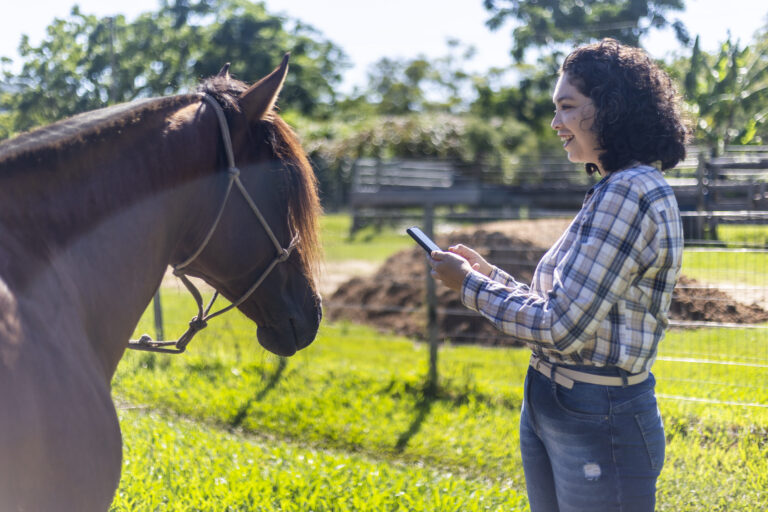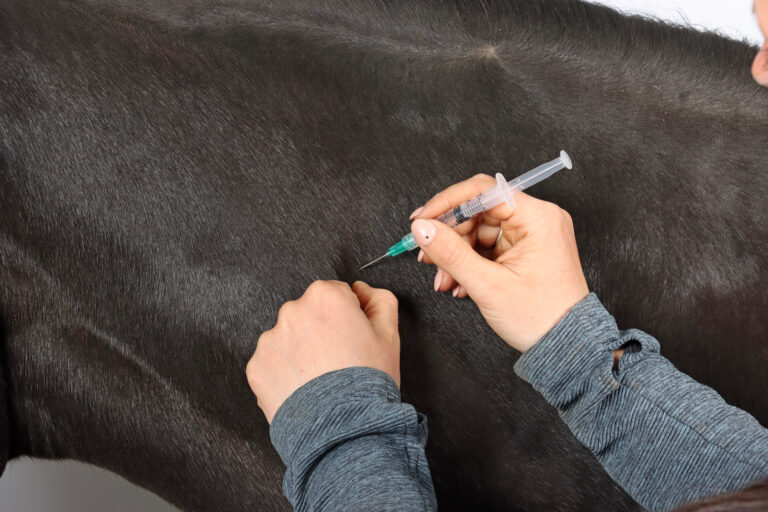
At the 2022 British Equine Veterinary Association (BEVA) conference, Tania Sundra, BSc, BVMS, MANZCVS, director of Avon Ridge Equine Veterinary Services in Australia, discussed the use of long-acting injectable omeprazole (LAIO) and its efficacy if given at five- or seven-day intervals. The first reported use of LAIO in 2017 used a seven-day dosing interval. It has been established that the mucosa’s median pH begins to taper off from >4 by day 4-5 after administration.
LAIO Study
A study evaluated 24 Thoroughbred racehorses given two doses of LAIO spaced seven days apart. The healing rate of equine squamous gastric disease (ESGD) was 100% and glandular lesions 75%. In another study, 86% of 33 horses with ESGD healed by two weeks, and 86% healed by four weeks. Horses with equine glandular disease (EGGD) experienced an 82% healing rate.
A retrospective study (July 2020–November 2021) compared ESGD and EGGD healing with LAIO at either five-day or seven-day intervals. LAIO was given IM in the gluteal muscles.
Ulcer scores at the start of the study were ≥Grade 2 EGGD, with some horses also experiencing ESGD. Four doses at 4 mg/kg were given at either five- or seven-day intervals. Gastroscopy was performed at five to seven days after the last dose. Images were blindly graded using the equine gastric ulcer scale: Grade 0 = normal appearance; Grade 1 = some erythema acceptable. There was no significant difference in signalment, presenting complaint or lesion severity between the five-day or seven-day groups for both glandular and squamous lesions.
Glandular Lesion Healing
Of 82 horses, aged 2–32 years in low-level pleasure and performance work, the most common presenting complaint associated with glandular lesions was a change in behavior. Treatment every five days had better outcomes of healing than an every seven-day dosing interval for glandular disease:
| q 5 days | q 7 days | |
| grade 0 | 69% | 38% |
| grade 0/1 | 93% | 63% |
Squamous Lesion Healing
Of 60 horses diagnosed with squamous gastric disease, many also had concurrent EGGD. Healing rates when dosed every five days exceeded those dosed every seven days.
| q 5 days | q 7 days | |
| grade 0 | 95% | 81% |
All horses with ESGD needed four injections due to concurrent EGGD. For ESGD, it is possible that only two doses are needed, said Sundra.
Complications
Complications included 1-2% of horses having localized swelling at the injection site, which rapidly resolved. Of the four injections, the owner administered three of them.
It is noteworthy that available LAIO in the United States is a different formulation than used in Australia and the United Kingdom. The USA form has resulted in 23% injection site reactions.
Injectable Omeprazole Treatment Results
The study summarized that a five-day dosing interval of the Australian form of LAIO increases the rate of healing of EGGD. This is likely due to acid suppression that facilitates healing.
Previous studies recommend a 28-day treatment course for EGGD, but this study suggested healing is achievable in 20 days when suppression of acid secretion is consistent.
A shortened inter-dosing interval of injectable omeprazole not only results in more rapid healing of EGGD lesions, but it is also associated with a lower cost to the owner and improved welfare benefit to the horse. Of note is the fact that oral omeprazole +/- sucralfate yields only 20-68% healing of glandular lesions.

![[Aggregator] Downloaded image for imported item #18782](https://s3.amazonaws.com/wp-s3-equimanagement.com/wp-content/uploads/2025/11/03125751/EDCC-Unbranded-13-scaled-1-768x512.jpeg)
![[Aggregator] Downloaded image for imported item #18808](https://s3.amazonaws.com/wp-s3-equimanagement.com/wp-content/uploads/2025/11/06141153/EDCC-Unbranded-17-scaled-1-768x512.jpg)

